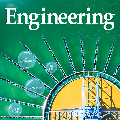Algorithms play a key role nowadays in many technological systems that control or affect various aspects of our lives. As a result, providing explanations to address the needs of users and organisations is increasingly expected by the laws and regulations, codes of conduct, and the public. However, as laws and regulations do not prescribe how to meet such expectations, organisations are often left to devise their own approaches to explainability, inevitably increasing the cost of compliance and good governance. Hence, we put forth "Explainability by Design", a holistic methodology characterised by proactive measures to include explanation capability in the design of decision-making systems. This paper describes the technical steps of the Explainability-by-Design methodology in a software engineering workflow to implement explanation capability from requirements elicited by domain experts for a specific application context. Outputs of the Explainability-by-Design methodology are a set of configurations, allowing a reusable service, called the Explanation Assistant, to exploit logs provided by applications and create provenance traces that can be queried to extract relevant data points, which in turn can be used in explanation plans to construct explanations personalised to their consumers. Following those steps, organisations will be able to design their decision-making systems to produce explanations that meet the specified requirements, be it from laws, regulations, or business needs. We apply the methodology to two applications, resulting in a deployment of the Explanation Assistant demonstrating explanations capabilities. Finally, the associated development costs are measured, showing that the approach to construct explanations is tractable in terms of development time, which can be as low as two hours per explanation sentence.
翻译:目前,在控制或影响我们生活各个方面的许多技术系统中,分类在当今许多控制或影响我们生活各个方面的技术系统中发挥着关键作用。因此,法律规章、行为守则和公众越来越期望提供解释以满足用户和组织需要的解释,然而,由于法律和规章没有规定如何满足这些期望,各组织往往不得不制定自己的解释方法,不可避免地增加合规和善治的成本。因此,我们提出了“设计造成的可解释性”这一整体方法,其特点是采取积极措施,将解释能力纳入决策系统的设计中。本文描述了软件工程工作流程中逐项说明解释方法的技术步骤,以根据具体应用环境中的域专家的要求执行解释能力。逐项解释方法的产出是一套配置,允许可重新使用的服务,不可避免地增加合规和善治的成本。因此,我们提出了“设计设计”相关数据的方法,可以用来解释相关数据点,反过来,用于解释对消费者作出个人解释的解释计划。根据这些步骤,各组织在设计每类具体应用的要求时,最终可以制定其解释方法,从而在设计其应用过程中,通过两个解释性解释系统来显示其定义。我们从设计应用了两个解释性规则。我们最后可以提出其解释性解释方法,在解释性解释性解释性解释方法中,在解释性解释性解释性规则中可以显示两个解释性要求中,在解释性解释性要求中,在解释性要求中,在解释性解释性要求中,我们可以显示其最后在解释性解释性解释性解释性解释性解释性要求中,在解释性解释性要求中,在解释性要求中可以显示其最后,在解释性要求中,在解释性解释性解释性要求中,在解释性解释性解释性要求中,在解释性要求中,在解释性要求中,我们的方法在解释性要求中,在解释性能是解释性能是解释性,在解释性解释性,在解释性解释性解释性解释性解释性解释性,在解释性解释性,在解释性解释性,在解释性要求中,在解释性要求中,在解释性解释性要求中,在解释性,在解释性解释性解释性解释性解释性解释性解释性解释性解释性解释性解释性解释性上,我们。在解释性解释性解释性解释性解释性解释性解释性解释性能,我们。在解释性,我们性,我们性,我们性,在解释性




